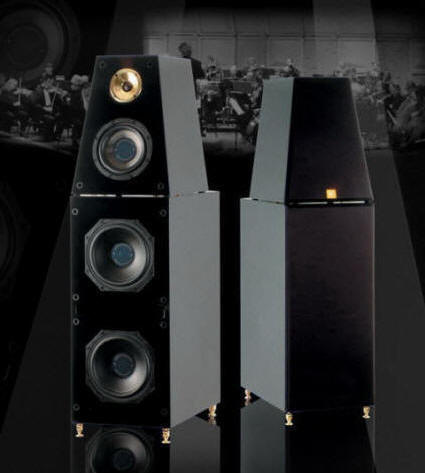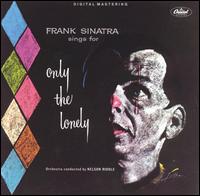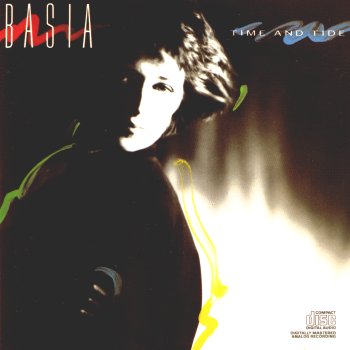Hyperion Sound Design HPS-938 Loudspeaker
| Hyperion Sound Design HPS-938 Loudspeaker |
|
|
|
Ron Nagle |
|
October 2004 |

Don’t stop reading until you get to the end of this article. You are in danger of being left out! Okay, okay, I’m just kidding, but I stumbled on to something that justifies me pecking at this keyboard while everybody else is outside enjoying fresh air and sunshine. It is about audiophile bonding, man and machine joined in a common quest as they sail the sonic seas. This is one of those rare times when it’s all good and I know what I want to say, but not exactly how to say it. Bear with me while I attempt to tell you about my aural adventure.
L’ object D’article
Like the majority of audiophiles, each year I see the price of high-end audio gear go higher and higher until it threatens to price me out of my hobby. Just like the one-eyed cat sniffing around the seafood store, the really good stuff is way out of my reach. I promised my audiophile readers I would keep one eye on the burgeoning Pacific Rim and the other eye in this bailiwick in case something does emerge that breaks down a long-standing price barrier. This is one of those infrequent events.
To begin, allow me to let you in on what may be a not so dirty little secret: There are American audio companies whose components are either partially or entirely made overseas at a lower cost and they’re not passing along any of their savings on to you. Now before I get further into this narrative, understand that this report is about a really fine product that is designed and assembled in the U.S. but with parts manufactured in China that should not be placed in this category. The Hyperion Sound Design HPS-983loudspeaker is distributed by California-based Studio Acoustics. The appearance of the HPS-938 is very much like that of the better-known $22,400 Wilson Audio Watt/Puppy 7 combination and two or three other high-end speakers I can think of. But the HPS-983’s shocking $4,000 price is decidedly un-Wilson like.
Because I believe that this three-way design is good enough to compete in the same niche as the Wilson, I will write this review in that context. For the most part they share the same basic enclosure design and utilize the same number of drivers. The two bass drivers and the tweeter are of the same size but different in construction. Frequency response for the HPS-938 is 30Hz up to 22kHz, sensitivity is rated at 90dB, and its impedance is 6 Ohms nominal. The speaker design is rigged out in two separate parts;the bass cabinet is a vertical rectangle with twelve coats of hand rubbed black lacquer. The top-mounted tweeter/midrange cabinet has the same rich, black finish but is in the shape of a truncated pyramid. The lower cabinet is a bass reflex enclosure on four spike feet that houses two 8” graphite SVF woofers placed vertically one above the other with a horizontal slotted port directly between the two. The letters SVF refer to a proprietary driver design called Synchro Vibrate Flat Top. It refers to a design that reinforces and stiffens the cone by using a flat disk in the center of the cone. The top section houses a proprietary 1” copper short horn tweeter and a 6 ½” Spider-less SVF fluid damped carbon fiber cone midrange. This two-piece enclosure design has grown in popularity over the last ten years. It provides practical advantages the most important in my book is the ability to set up and fine tune a sound stage by moving the tweeter/midrange cabinet independently of the bass enclosure. It also allows you to space the speakers a bit farther apart than a one-piece design facilitating a larger, more realistic soundstage.
Comparisons
While the HPS-938 may look like some other Hi-End speakers, it has one or two qualities that set it apart from the ordinary. When I sat down to listen it quickly dispelled my preconceptions about it simply being a look-alike knockoff. On the contrary, it performed far better than I expected. Before I go any further with this tale, let me stop and fill in some background about two other highly respected benchmark “look-alike” speakers; the aforementioned Wilson Watt/Puppy and the the $20,000 Joseph Audio Pearl. I remember a demo a few years ago of the Watt/Puppy 5 at a high-end in a small and very crowded room. I found a seat about six feet from the left speaker. One of the demo CD’s played exhibited a hard, glaring treble, so much so that I had to cover my left ear. Now Dave Wilson has done a lot since then with his newest design to smooth out the rising treble response. The Watt/Puppy 7 is not nearly as critical.
While the Wilson speaker has generally been regarded is a very revealing tool for equipment or recorded music evaluation, Jeff Joseph’s very organic Joseph Audio Pearl plays old analog recordings when he demos his speakers and his speakers sound like they have been voiced with analog. I still remember listening through the groove noise when Jeff Joseph played a recording of a young Louis Armstrong singing and playing St. James Infirmary. It was simply wonderful. Now consider the Hyperion HPS-938. They are voiced somewhere in between these two fine speakers. The midrange is very similar to that of the Pearl but the tweeter is extended or you might say tipped up like the older Wilson but not to the same extent. It can emphasize vocal sibilance, but in a narrow band that does not usually affect male voices. Mind you, it will not reproduce sibilance if it is not present on the recording. But on the other hand, that very same characteristic lends itself to ambient, airy details and a sense of spaciousness. In a world of tradeoffs, I would much rather see and hear into a deep and wide soundstage that liberates me from my small room. That is something that I value very much; push back the boundaries and transport me into the performance and I require little else. Ultimately the quality that impresses me the most is a continuous natural transition from the lower midrange to the treble. They offer a refined, smooth presentation that belies the fact that they use a midrange crossover. They remind me of the continuous midrange of my reference Quad ESL-63 electrostatics but with more extension. It is very significant in my estimation that the HPS-938 can reproduce music with the same clear, seamless, midrange voice even when turned down and played at low volume. This indicates to me excellent driver matching and crossover integration.
In my Room
The manufacturer’s representative helped me to unpack and do a preliminary setup; I should say instructed me on how to remove the lacquered speakers (“take off your wristwatch”) from the triple-walled cardboard boxes and their custom cloth Velcro secured slipcases. I spent the rest of the time fine-tuning and tweaking until I felt I had done everything I could to optimize them in my apartment’s living room. This is where I ran into the proverbial fly in the ointment. In my somewhat smallish listening space, in front of an 11’ 8” wide wall, the bass towers easily loaded the room and produced excessive low bass. At a level equivalent to polite conversation between three or four people the bass remained in proportion to all the other elements of the performance. The bass was not a problem when I first heard them in Alexis Park Hotel room AP2260 during the 2004 CES. Nor did it prove to be a problem during the promo in the parlor of the Studio Acoustics representative.  When I listened to Frank Sinatra sing “What’s New” from the album Only the Lonely [Capital 48471] the vocal inflections and breathing sounds seemed to place him in the room directly in front of me. The sound of the bass line was deep and slightly warm but replete with small details like the husky reed sound of a baritone saxophone. The problem I ran into is in no way the fault of the speaker. What was needed was for my wife to sleep on the couch while I cleared a few things out of our master bedroom. That way I could setup the speakers on the 14-foot long wall of the room. I explained it would only be temporary, two or three weeks tops until I finished the review. Her alternative was for me to sleep on the couch. Darn it! That would still leave me battling deep bass room nodes. Women are so unreasonable. They just seem to want to personalize everything. Resourceful creature that I am, I still had a few tricks up my sleeve. Forced to use alternative therapies, I used my Room Tunes pillows and Gryphon panels on the sidewalls and Argent Acoustic Room Lenses around the speakers to combat the nasty nodes. And in case you were wondering, it worked fairly well. I still can increase the volume from my Audio Research CL-60 amplifier and get the room to boom, but now it takes a bit more energy to energize my room.
When I listened to Frank Sinatra sing “What’s New” from the album Only the Lonely [Capital 48471] the vocal inflections and breathing sounds seemed to place him in the room directly in front of me. The sound of the bass line was deep and slightly warm but replete with small details like the husky reed sound of a baritone saxophone. The problem I ran into is in no way the fault of the speaker. What was needed was for my wife to sleep on the couch while I cleared a few things out of our master bedroom. That way I could setup the speakers on the 14-foot long wall of the room. I explained it would only be temporary, two or three weeks tops until I finished the review. Her alternative was for me to sleep on the couch. Darn it! That would still leave me battling deep bass room nodes. Women are so unreasonable. They just seem to want to personalize everything. Resourceful creature that I am, I still had a few tricks up my sleeve. Forced to use alternative therapies, I used my Room Tunes pillows and Gryphon panels on the sidewalls and Argent Acoustic Room Lenses around the speakers to combat the nasty nodes. And in case you were wondering, it worked fairly well. I still can increase the volume from my Audio Research CL-60 amplifier and get the room to boom, but now it takes a bit more energy to energize my room.
Bottom Line
I wish I could just go bananas with these speakers and enjoy them full blast, but alas, ‘tis not my fate. I would love to crank up Vince Castro and play his Do Wop Bong Bong song, Bring Back My Love and dance around in my underwear. However, I do see two other possible solutions for these speakers. Even though I can only use one amplifier they can be bi-amped or even tri-amped.  So what if the amp driving the bass had a volume control? That might solve the problem? Another thought, the manufacturer might consider giving the user some variable control on the back of the enclosure to adjust the bass level? Ideally if I could bi-amp these speakers I would use a classic sounding tube amp on the midrange and treble and a good bi-polar, solid-state amp to control the bass. Fortunately for me, the midrange sound of the human voice is my primary musical reference and does not require deep bass. So I will be content listening to my long-standing reference: Basia’s Time and Tide [Epic EK-40767] played at moderate volume levels.
So what if the amp driving the bass had a volume control? That might solve the problem? Another thought, the manufacturer might consider giving the user some variable control on the back of the enclosure to adjust the bass level? Ideally if I could bi-amp these speakers I would use a classic sounding tube amp on the midrange and treble and a good bi-polar, solid-state amp to control the bass. Fortunately for me, the midrange sound of the human voice is my primary musical reference and does not require deep bass. So I will be content listening to my long-standing reference: Basia’s Time and Tide [Epic EK-40767] played at moderate volume levels.
It’s one thing to design a speaker and sell it for $20,000 and quite another to do pretty much the same thing and sell and ship it for only $4,000. This has been a kick for me. I almost feel like I discovered them. Yes, I know $4,000 bucks is still not cheap, but consider what these speakers can do in a good room (and of course you must give them room to perform) and then consider what the competition costs. You will agree they are indeed a very good deal. Remember all speaker designers make some compromises to voice their speakers as close as possible to what they consider accurate. I don’t claim that the Hyperion HPS-938 is better than the two speakers I’ve mentioned in this report, but the differences are not so great, while the price tags are. Ultimately, the decision will come down to a matter of your personal taste. Now I wonder, is it possible for me to nominate one’s self for a Grammy? I don’t know, but I think it’s worth a shot. What if I punch in Grammy on Google??
Oh, and one more thing. You can call them for additional information or if you’re ready, order them direct.
____________
Specifications
System: 3 ways With Bass Reflex Enclosure.
Response: 35Hz to 22 KHz
Sensitivity: 90 db.
Impedance: 6 Ohms 3.8 Ohms minimum.
Power Requirements: 50 watts up to 200 watts Maximum.
Woofer: 8” P. P. Graphic S.V.F. woofer X 2.
Midrange: 6½” Carbon Fiber, S.V.F. fluid damped.
Tweeter: 1” Copper short horn.
Crossover: 230Hz, 3KHz.
Finish: Piano Black Lacquer
Dimensions:
Head: H 15.5/8” x W 11.7/8” x D 14.3/8”
Base: H 25.5/8” x W 11.7/8” x D 19.1/8”
Weights: Lbs
Head: 25 lbs.
Base Cabinet: 63 lbs.
Price:$4,000.00
Manufacturer
Hyperion Sound Design
Distribution: Studio Acoustics, Inc.
20529 Walnut Dr. Unit B-7
Walnut, CA 91789
Tel: 909-598-2535
www.hyperionsound.com
![]()
Don’t forget to bookmark us! (CTRL-SHFT-D)
Stereo Times Masthead
Publisher/Founder
Clement Perry
Editor
Dave Thomas
Senior Editors
Frank Alles, Mike Girardi, Key Kim, Russell Lichter, Terry London, Moreno Mitchell, Paul Szabady, Bill Wells, Mike Wright, Stephen Yan, and Rob Dockery
Current Contributors
David Abramson, Tim Barrall, Dave Allison, Ron Cook, Lewis Dardick, Dan Secula, Don Shaulis, Greg Simmons, Eric Teh, Greg Voth, Richard Willie, Ed Van Winkle, and Rob Dockery
Music Reviewers:
Carlos Sanchez, John Jonczyk, John Sprung and Russell Lichter
Site Management Clement Perry
Ad Designer: Martin Perry





Be the first to comment on: Hyperion Sound Design HPS-938 Loudspeaker